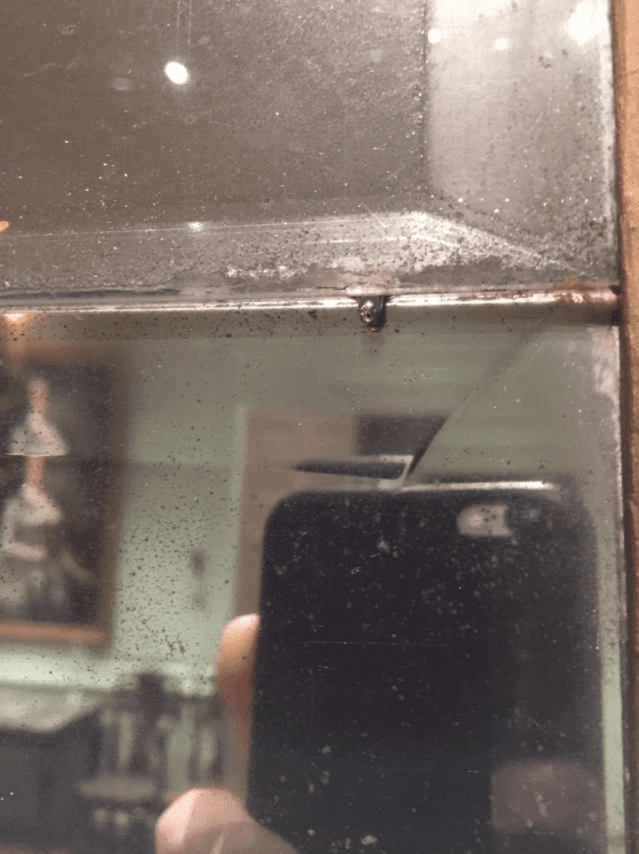
From the end of the 15th to the mid-19th century, tin-mercury amalgams were most often used to create the reflective surfaces on mirrors. Scientists at Winterthur have found that at least two-thirds of the mirrors in the collection contain these amalgams. Unfortunately, they are inherently unstable. Over time, the amalgam deteriorates, producing dark spots and a less reflective surface due to corrosion of the tin and reversion of the mercury to its natural liquid form.
As the mercury drips from the mirrors, it scatters on surfaces below and evaporates. Due to the toxicity of the mercury, that process is a health and safety concern.
For many years, dripping mercury mirrors in storage have been placed inside plastic bags to contain mercury droplets. Recent projects by conservation students revealed that mercury vapor levels are elevated to unsafe ranges inside storage bags. The mirrors are now stored on wire racks with an acid-free corrugated tray below. The open storage provides airflow around the mirror, preventing buildup of mercury vapors, while the tray captures mercury droplets so they don’t fall onto the floor below.
If you have these mirrors in your collection, be sure to handle them with nitrile gloves and keep them in the display orientation. After handling, dispose of the gloves and thoroughly wash your hands.